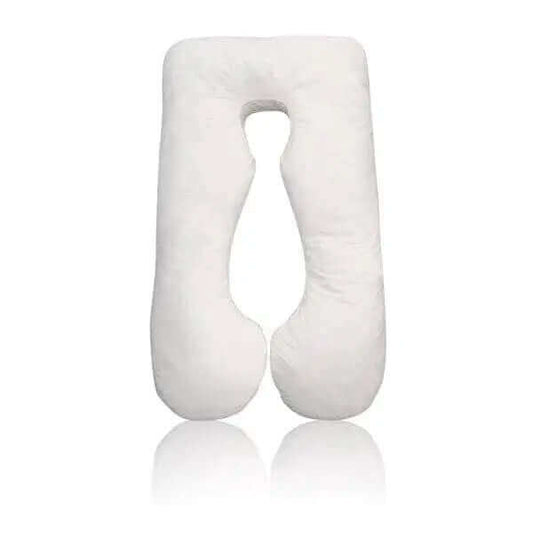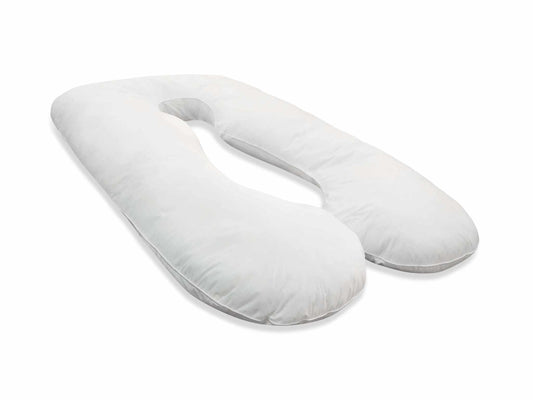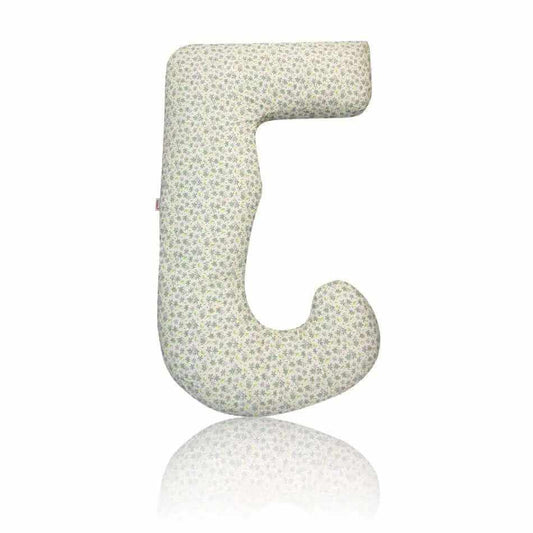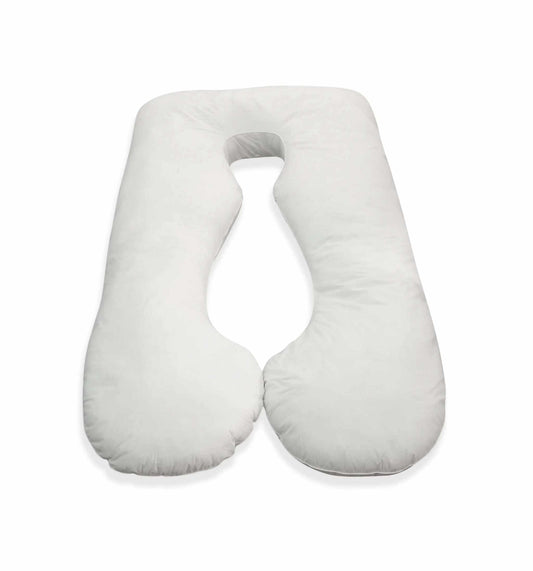The Ultimate Guide to Sleeping Pillows
Sleeping well is essential for our overall health and well-being, and the right pillow plays a crucial role in ensuring a good night's sleep. The type of pillow you choose and the way you use them can make a significant difference in your sleep patterns and how refreshed you feel when you wake up. In this comprehensive guide, we'll explore the correct way to sleep on a pillow, how to choose the best one for your needs, and how different sleeping positions and pillow heights can impact your sleep quality.
Understanding the Importance of the Right Pillow
The Correct Way to Sleep on a Pillow
The first step to a comfortable night's sleep is understanding the correct way to sleep on a pillow. Many people experience discomfort and even neck pain because they aren't using their pillows correctly. Here are some tips for the proper way to sleep on a pillow:
Pillow Height Matters
One common issue is using a pillow that's too high or too low. If your pillow is too high, it can strain your neck and cause discomfort. On the other hand, a pillow that's too low may not provide adequate support for your head and neck. Finding the right pillow height is crucial for a good night's sleep.
- The Science Behind Pillow Height
Now, let's explore the science behind pillow height and its profound impact on your sleep quality. Pillow height is not merely about comfort; it's about supporting the natural curvature of your spine while you sleep.
Finding the ideal pillow height is a highly individualized process, as it depends on various factors, including your body size and preferred sleeping position. It's essential to consider what feels most comfortable for you. If you're a back sleeper, you might prefer a lower pillow that keeps your head in a neutral position, aligning it with your spine. In contrast, side sleepers often require higher pillows to fill the space between their ear and shoulder, maintaining proper spinal alignment. Moreover, your body size plays a role; taller individuals may find taller pillows more suitable for maintaining that coveted spinal alignment.
Spinal Alignment: Proper spinal alignment during sleep is crucial to prevent discomfort and pain. Pillow height plays a significant role in achieving this alignment. A pillow that's too high can contribute to back pain. Try a lower-profile pillow to alleviate this issue. Experiment with different.
Low Pillows: If your pillow is too low, your neck may be forced into an unnatural angle, potentially leading to neck pain and discomfort.
High Pillows: Conversely, a pillow that's too high can disrupt spinal alignment by pushing your head and neck forward. This can result in headaches, neck pain, and even back pain.
Ideal Pillow Height: The ideal pillow height is one that allows your head to rest in a neutral position, perfectly aligned with your spine. This ensures that your neck is neither elevated too high nor drooping too low, promoting a comfortable and supportive sleep.
- Finding the Right Pillow Height for You
Determining the ideal pillow height is a personal journey, influenced by various factors:
Sleeping Position: Your preferred sleeping position significantly influences the pillow height you need. Back sleepers typically require lower pillows, while side sleepers may need higher ones.
Body Size: Your body size can also affect the ideal pillow height. Taller individuals may need taller pillows to maintain proper alignment, while smaller individuals may prefer lower ones.
Pillow Adjustment: Some pillows allow you to adjust their height by adding or removing fill. This adaptability can be beneficial if you're unsure about your ideal pillow height, providing flexibility and customization options.
Pillow Between Legs for Hip Pain
If you suffer from hip pain, sleeping with a pillow between your legs can help alleviate discomfort. This position helps align your spine and reduces pressure on your hips, promoting better sleep and less pain.
When dealing with hip pain, the simple act of placing a pillow between your legs can make a world of difference in your sleep quality and overall comfort. This position not only aligns your spine but also takes the pressure off your hips, which can be especially beneficial for individuals suffering from conditions like arthritis or hip impingement. By maintaining a more natural and relaxed sleeping posture, you can wake up feeling refreshed and experience less pain or stiffness in your hips. Additionally, the cushioning effect of the pillow can enhance your overall comfort, making it easier to drift into a peaceful slumber.
The journey of pregnancy is a unique and transformative experience, but it can also come with its share of discomforts, especially during sleep. As a woman's body undergoes significant changes, including weight gain and shifts in posture, sleeping comfortably can become challenging. This is where the strategic use of a pillow comes in.
Placing a pillow between the legs not only eases the strain on the lower back and hips but also provides essential support for the growing belly. It helps maintain a more neutral spinal alignment, reducing the risk of developing pain or discomfort associated with pregnancy. By embracing this simple yet effective solution, expectant mothers can enjoy more restful nights and wake up feeling more refreshed as they nurture themselves and their growing baby.
Pillow Support for Neck Pain
Neck pain is a common issue, and it can often be exacerbated by improper pillow use. The firmness of your pillow matters when you're dealing with neck pain. Opt for a pillow that provides adequate support without being too hard or too soft. Over time, pillows can lose their shape and support so replacing a worn-out pillow can ensure you have the necessary support, contributing to discomfort.
For individuals experiencing chronic neck pain, selecting the right pillow can be a game-changer in achieving a good night's sleep. Memory foam pillows or those with contouring features can be particularly beneficial for neck pain sufferers. These pillows mold to the shape of your neck and head, providing personalized support that aligns your spine correctly.
Additionally, if you're inclined to change positions during sleep, consider a pillow that offers the right balance of support and adjustability. Proper pillow maintenance, including fluffing and rotating, is essential to maintain its effectiveness in providing neck pain relief. Investing in a quality pillow designed to alleviate neck pain can lead to significant improvements in sleep quality and overall comfort, allowing you to wake up feeling revitalized and pain-free.
Avoid Sleeping with a Pillow on Your Head
While it might seem tempting to sleep with a pillow covering your head, it's generally not recommended for several reasons. Sleeping with a pillow on your head can strain your neck muscles and disrupt your sleep pattern. Your neck should be in a neutral position to prevent discomfort and pain.
Also, having a pillow covering your face can restrict airflow, potentially leading to breathing difficulties during the night. Proper ventilation is essential for restful sleep. The discomfort caused by a pillow on your head can lead to frequent awakenings throughout the night, disrupting your sleep cycle. It's best to use a pillow that supports your head and neck without covering your face for a more comfortable and uninterrupted sleep experience.
Incorporating these additional tips into your pillow usage can further enhance your sleep quality and overall comfort. Remember that the correct way to sleep on a pillow is a personal journey, and it may require some experimentation to find the perfect pillow and sleeping position that suits your unique needs.
The Best Way to Sleep with Pillows
The best way to sleep with pillows varies from person to person, as it depends on your individual needs and preferences. Let's explore some common sleeping positions and the best pillow choices for each:
Sleeping with One Pillow: If you prefer to sleep with just one pillow, choose a pillow that offers good neck support. Memory foam pillows or contoured pillows are excellent options for this purpose. They provide the necessary support to keep your spine aligned while you sleep.
Sleeping with Three Pillows: Some people like to sleep with multiple pillows. This can include one pillow under the head, another between the legs, and a third for additional support. If you choose this sleeping arrangement, make sure each pillow is the right height and firmness to maintain proper alignment and comfort.
Sleeping with a Body Pillow: Sleeping with a body pillow is an excellent way to improve sleep quality and comfort. These elongated pillows provide full-body support, particularly beneficial for side sleepers, as they can be nestled between knees and arms to maintain spinal alignment. Body pillows reduce pressure points, decrease tossing and turning, and relieve aches and pains, making them ideal for those seeking maximum comfort during sleep.
Choosing the Right Pillow
Now that we've discussed the various ways to sleep with pillows, let's explore how to choose the right pillow for your needs:
Consider Your Sleeping Position
Your preferred sleeping position should influence your pillow choice. Back sleepers typically benefit from medium-firm pillows, while side sleepers may prefer firmer pillows. Stomach sleepers usually need a softer, thinner pillow to prevent strain on the neck.
- Back Sleepers.
Back sleepers have unique needs when it comes to pillows. They should aim for a pillow that supports the natural curve of their neck and head.
Here are some considerations for back sleepers:
Memory Foam Pillows: Memory foam pillows are an excellent choice for back sleepers because they contour to the shape of your head and neck, providing optimal support.
Medium-Firm Pillows: A medium-firm pillow offers the right balance of comfort and support for back sleepers.
- Side Sleepers:
Side sleepers need a pillow that keeps their head and neck aligned with their spine. The goal is to fill the space between the ear and shoulder while maintaining proper spinal alignment.
Here are some options for side sleepers:
Firm Pillows: A firmer pillow is often the best choice for side sleepers. It helps keep the head and neck in a neutral position.
Contoured Pillows: Contoured pillows have an ergonomic shape that cradles the head and neck, providing excellent support for side sleepers.
- Stomach Sleepers
Stomach sleeping is generally discouraged because it can strain the neck and spine. However, if you're a stomach sleeper, choosing the right pillow is crucial to minimize the risk of discomfort and pain:
Thin and Soft Pillows: Opt for a thin, soft pillow or even no pillow at all. This prevents your neck from being excessively tilted.
Pillow Material Matters
Pillows come in various materials, including memory foam, latex, feather, and down. Each has its pros and cons. Memory foam pillows conform to your shape, while latex pillows offer good support and are hypoallergenic. Feather and down pillows provide a plush feel but may require frequent fluffing.
- Pillow Filling and Its Impact on Sleep
The filling material of your pillow is a fundamental factor that can affect not only your comfort but also your sleep quality. Let's take a closer look at how different pillow fillings influence your sleep:
Memory Foam Pillows: Memory foam pillows are renowned for their ability to conform to your unique shape, providing excellent support. This adaptability reduces the chances of waking up with a sore neck or experiencing aches and pains. If super comfort is what you seek, memory foam pillows are often an excellent choice.
Feather Pillows: Feather pillows offer a plush and luxurious feel, and they are incredibly soft and lightweight. However, they may require frequent fluffing to maintain their loft and support. If you value a soft and airy sleep surface, feather pillows may be your preference.
Latex Pillows: Latex pillows are known for their durability and resilience. They offer a balanced combination of comfort and support, making them a popular choice. Latex pillows are also hypoallergenic and resistant to dust mites and other allergens, enhancing sleep quality.
Polyester Fill Pillows: These synthetic pillows are often budget-friendly and hypoallergenic, making them an accessible option for many. However, they may not provide the same level of comfort and support as memory foam or latex pillows, so it's essential to consider your specific needs.
- Pillow Filling, Allergies and Breathability
Allergies can significantly disrupt your sleep, leading to stuffy noses, sneezing, and general discomfort. If you have allergies, consider hypoallergenic pillow options. Additionally, choose a pillow with good breathability to prevent overheating during the night. If you're prone to allergies, here's how pillow filling can affect your sleep quality:
Hypoallergenic Fill: Many pillows are designed with hypoallergenic materials that resist common allergens. Opting for hypoallergenic pillows can be an excellent choice for allergy sufferers, ensuring a more restful night's sleep.
Pillow Protectors: To further safeguard against allergens, consider using pillow protectors. These protective covers create an additional barrier between you and potential irritants, enhancing your sleep quality.
Additional Pillow Tips and Considerations
- Neck Pain Because of Pillow:
If you're experiencing neck pain due to your pillow, it's essential to address this issue promptly. Evaluate your pillow's height and firmness, and consider switching to a pillow better suited to your sleeping position.
- Super Comfort:
Finding the perfect pillow might require some trial and error, but the comfort and support it provides are worth the effort. Investing in a high-quality pillow that suits your needs can make a significant difference in your sleep quality.
- Allergies and Pillow Materials :
If you suffer from allergies, consider hypoallergenic pillow options. Hypoallergenic pillows are designed to resist common allergens like dust mites, pollen, and pet dander. This can help improve the quality of your sleep, especially if you have allergies.
Pillow Maintenance
Proper pillow maintenance is essential to prolong its lifespan and ensure a hygienic sleep environment. Here are some tips for maintaining your pillows:
- Regularly Fluff and Rotate: Fluffing and rotating your pillows can help maintain their shape and support.
- Pillow Protectors: Consider using pillow protectors to shield your pillows from stains, dust, and allergens. These are usually machine-washable and easy to maintain.
- Washing Pillows: Proper care of your pillows is essential for extending their lifespan and maintaining their effectiveness. Knowing how to care for your pillows is crucial for creating a hygienic sleep environment. Check the care label on your pillows for washing instructions. Most synthetic pillows are machine washable, while natural fill pillows like down or feather may require professional cleaning.
- Exploring Pillow Options for Super Comfort: While the perfect pillow can significantly improve your sleep quality, it's essential to understand that comfort is subjective. What feels heavenly to one person may not be right for another. Here are some tips to discover your personal pillow oasis:
- Pillow Trials: Many companies offer trial periods for their pillows, allowing you to test them out for an extended period in the comfort of your own home. This can be an excellent way to determine if a pillow is suitable for your unique needs.
- Consult with Professionals: If you're dealing with chronic pain or discomfort, it may be beneficial to consult with a healthcare professional. They can provide valuable insights into your specific needs and recommend the best pillow options for your condition.
- Personal Preferences: Remember that your personal preferences are essential in pillow selection. Factors such as pillow firmness, material, and loft are subjective. Don't hesitate to experiment until you find the pillow that suits you best.
Conclusion
In summary, sleeping pillows play a crucial role in ensuring a good night's sleep. To sleep comfortably and wake up refreshed, it's essential to understand the correct way to sleep on a pillow, choose the right pillow for your needs, and consider your sleeping position. Don't ignore common pillow problems like neck pain or discomfort; address them by making informed choices about your pillow selection and sleeping position. By following these guidelines, you can enjoy super comfort and wake up without
In Conclusion
Selecting the right pillow and understanding the correct way to sleep on it are paramount for achieving a good night's sleep. Pillow filling, height, and your sleeping position all contribute significantly to your sleep quality and overall comfort. Whether you're dealing with neck pain, back pain, hip discomfort, or simply seeking super comfort, rest assured that there's a perfect pillow out there for you.
Take the time to research and try different pillow options to find the one that caters to your specific needs and preferences. Never underestimate the importance of a good night's sleep; it's a vital component of your overall health and well-being. By following the guidance provided in this extensive guide, you can ensure that you not only sleep comfortably but also wake up feeling refreshed and ready to take on the day












